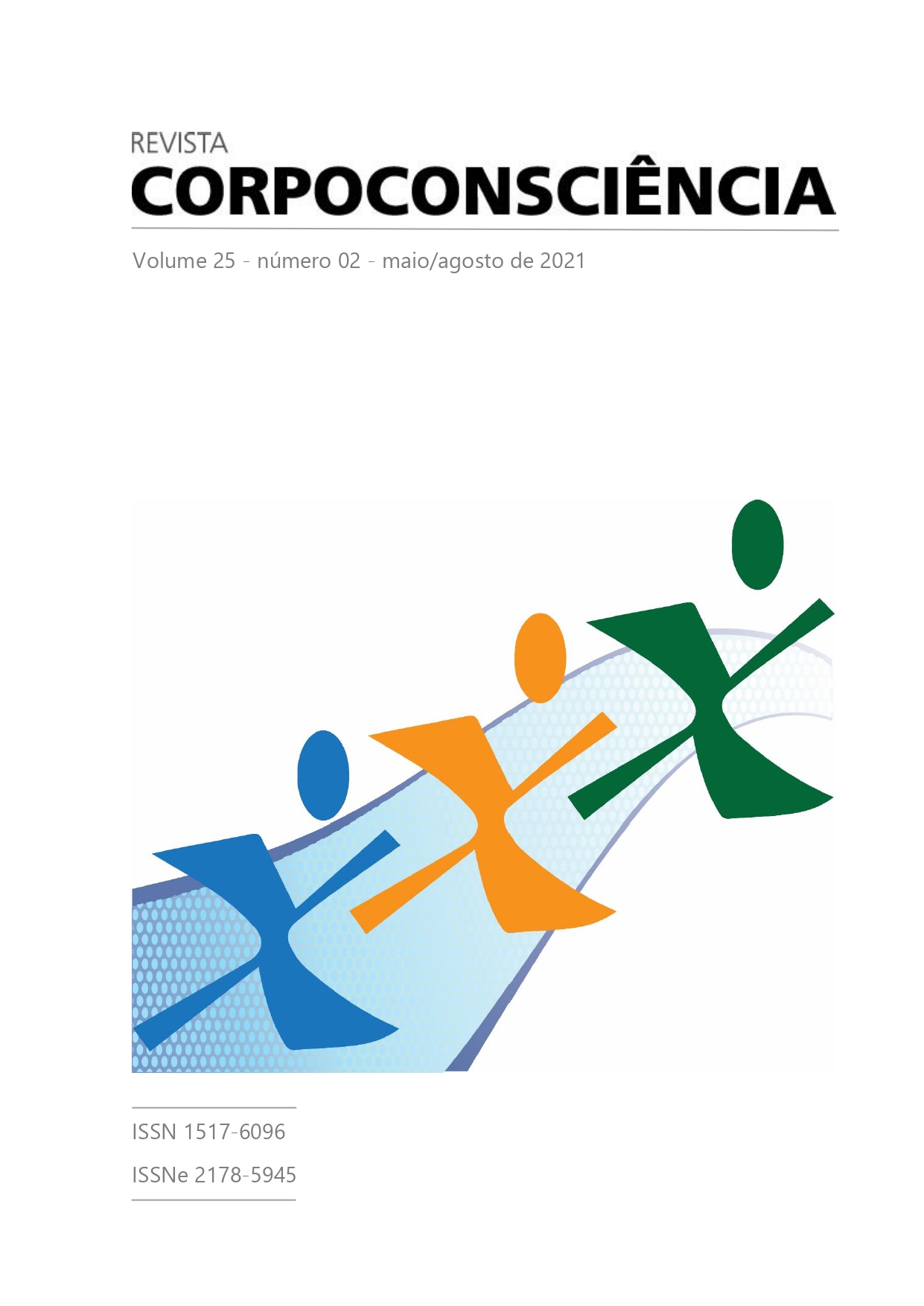ESTIMATED CONTRIBUITION OF LEGS IN THE CRAWL SWIMMING
DOI:
10.51283/rc.v25i2.12434Keywords:
Velocity Disturbance Method (VPM), Crawl Swim, Leg PropulsionAbstract
The aim of the study was to evaluate the relative contribution of lower limbs in the crawl swim using the velocity disturbance method (VPM) in athletes of different skill levels. 106 swimmers participated in the study, they were equally divided into two groups according to their skill level (competitive and recreational). The swimmers performed 8 maximum sprints of 15 meters by swimming crawl in 4 different conditions with a minimum of 2'30"between sprints (full swim; complete with parachute; only kick and; kick with parachute). All sprints were filmed with an underwater camera (GoPro Hero4 Black), and the parameters of interest recorded were: average swimmer speed, active drag and swimming power in each of the conditions. For statistical comparison of the relative contribution of lower limbs between groups a test-T was performed. The significance level adopted was p <0.05. The main result showed in the comparison between groups that the relative contribution of lower limbs, were significantly higher for the recreational group, 33.9 ± 23.1% vs. 22.5 ± 10.3% (p = 0.02). Finally, the VPM proved to be an easy to perform technique capable of assessing the relative contribution of lower limbs in the crawl swim, making this information accessible to coaches.
References
AMAR, Jules. The human motor. London, England: Routledge, 1920.
BUCHER, Walter. Influence of the leg kick and the arm stroke on the total speed during the crawl stroke. International symposium on biomechanics in swimming, 2. Anais... Brussels, BE: University Park Press, 1974.
COUNSILMAN, James. La natacion: ciencia y tecnica. Barcelona, España: Editorial Hispano Europea, 1971.
FINA. Fina Facilities Rules, 2016. Disponível em: <http://www.fina.org/sites/default/files/rules-print-pdf/8458.pdf> Acesso em: 23 de mai. de 2021.
HOLLANDER, Peter e colaboradores. Measurement of active drag during crawl arm stroke swimming. Journal of sports sciences, v. 4, n. 1, p. 21-30, mar., 1986.
HOLLANDER, Peter; DE GROOT, Gert; VAN INGEN SCHENAU, Gerrit Jan. Contribution of the legs to propulsion in front crawl swimming. Swimming science, v. 18, p. 39-43, 1988.
KARPOVICH, Peter. Analysis of the Propelling Force in the Crawl Stroke. Research quarterly, v. 6, n. 2, p. 49-58, 1935.
KOLMOGOROV, Sergei; DUPLISHCHEVA, O. Active drag, useful mechanical power output and hydrodynamic force coefficient in different swimming strokes at maximal velocity. Journal of biomechanics, v. 25, n. 3, p. 311–318, 1992.
MEZÊNCIO, Bruno e colaboradores. Overall indexes of coordination in front crawl swimming. Journal of sports sciences, v. 38, n. 8, p. 910-917, 2020.
NAKASHIMA, Motomu. Mechanical study of standard six beat front crawl swimming by using swimming human simulation model. Journal of fluid science and technology, v. 2, n. 1, p. 290-301, 2007.
YANAI, Toshimasa. Rotational effect of buoyancy in front crawl: does it really cause the legs to sink? Journal of biomechanics, v. 34, n. 2, p. 235-243, 2001.
ZAMPARO, Paola e colaboradores. Effect of the underwater torque on the energy cost, drag and efficiency of front crawl swimming. European journal of applied physiology and occupational physiology, v. 73, n. 3-4, p. 195-201, 1996.
Downloads
Published
How to Cite
Issue
Section
License
Autores que publicam nesta revista concordam com os seguintes termos:
- Autores mantém os direitos autorais e concedem à revista o direito de primeira publicação, com o trabalho simultaneamente licenciado sob a Creative Commons Attribution License que permitindo o compartilhamento do trabalho com reconhecimento da autoria do trabalho e publicação inicial nesta revista.
-
A Revista Corpoconsciência da Universidade Federal de Mato Grosso está licenciada com uma Licença Creative Commons - Atribuição 4.0 Internacional. Baseado no trabalho disponível em https://periodicoscientificos.ufmt.br/ojs/index.php/corpoconsciencia/index.
- Autores têm autorização para assumir contratos adicionais separadamente, para distribuição não-exclusiva da versão do trabalho publicada nesta revista (ex.: publicar em repositório institucional ou como capítulo de livro), com reconhecimento de autoria e publicação inicial nesta revista.
- Autores têm permissão e são estimulados a publicar e distribuir seu trabalho online (ex.: em repositórios institucionais ou na sua página pessoal) a qualquer ponto antes ou durante o processo editorial, já que isso pode gerar alterações produtivas, bem como aumentar o impacto e a citação do trabalho publicado (Veja O Efeito do Acesso Livre).





